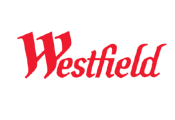With over 10 years of experience as a business and corporate adviser, Jason Popelier from FWO Chartered Accountants shares with as his thoughts and tips if you want to a solid business asset protection. Learn more about how to change the model of your business to make sure that you are considering things you have between the items that are bringing you in money and the items that are costing you money are separated, from the accounting and insurance perspective.
What to Consider When Reviewing Your Business Model
What is the number one thing that you should consider when reviewing the model of your business? When do you go from sole trader to company to then having several companies or a trust company?
Jason: With any of my clients or new clients or potential clients, I always start with their goals and how their current business structure currently enables them to achieve that. I ignore what’s been set up in the past because there’s a lot of businesses out there who have the wrong entities or have the right entities but they’ve structured it in the wrong way as well.
I have quite a few construction clients and they have millions of dollars worth of equipment. There are a lot of businesses out there who look at the costs of setting up or maintaining two entities and decide to hold all assets all under the same entity to save money, and technically they do but at a cost of increased risk.

You can imagine that if something went wrong, and the business essentially got tanked, it was out of their control because they were a subcontractor to a bigger guy who deliberately withheld cash flow (it happens a lot especially in the construction industry). If withheld for five months, they will essentially have to go into either voluntary liquidation or forced liquidation because they can’t pay some of their subcontractors or staff as well. They will lose everything. And the other person just goes one less creditor to pay.
If they had structured the situation a little bit differently, say, they had a warehouse that held the equipment, they could have that in a separate entity, which is its own legal entity. Those separated assets can be protected in that sense. To cover costs and replacements, the trading entity can have, in normal terms, a cross charge for leasing of those assets and facilities. The difference now is those same assets are not subject to the same risks of the trading business, even if they’re ultimately still commonly owned.
Looking at the types of structures, the reason you would have a proprietary limited (company) scenario versus a sole trader or partnership structure scenario is a sole trader (and partners) are liable to their share or the entire project, depending on if they’re partners default. Limited, by itself, means that there’s a limitation on liability. You automatically have less exposure than operating by yourself or in partnership. If you use multiple structures that are limited in their own rights, then there might be a further set of layers for protection. I went on a bit of a tangent around protection after what goals they’re trying to achieve.
Protect your business with guaranteed uptime. We keep you up and running or we give your money back.
Jason: One of the greatest assets for a business owner is the business itself and it has the highest potential to create the most value out of any asset they are other than themselves, so why don’t business owners give more consideration to risks?
We forget that we are our own greatest asset. No one else can replace us. You can actually insure that as well. But if you’re in control of your own business instead of being an employee, it’s co-related. There has to be an element of your business, essentially making up that that goal.
We look at how your business looks like and how we can de-risk your business. We’ve got to look at each business in its own right, not as a big pool.
• Start with an element that you’ve got to focus on.
• Look at what products you have and how you have an advantage in the market, such as why people want to come and work with you.
• Consider technology elements and how you protect those items or services (this is when cybersecurity would come into place).
There’s always an element and yes, it’s a contributing factor. But the more risks you have, like the more people you have in your business, the more risks you have to consider. You can imagine the risk that is reduced down for a 10-person practice versus 100. It also depends on the nature of the business and everything else that most insurance companies would factor in.
If you have a house and you chuck security cameras on the house and an alarm system, it is going to reduce your premiums. It’s similar to having a business with a bunch of IT equipment and then you decided to get Dorks Delivered’s Business Continuity Plan to make sure that someone else is taking a level of accountability. In a sense, it is like an insurance policy and it might reduce the premium when you’re looking at cyber insurance. Learn more about risk mitigation and insurance in Hiring Business Lawyers With Katie Richards.
Pay a set price every month for IT support and enjoy guaranteed uptime. If you go down, we’ll pay you!
A Way to Protect Your Business From Cyber Attacks
The Toll Group was under a bit of heat recently and the ransomware attack was done through a phishing email, which is when someone sends an email pretending they are someone else. What could Toll have done differently to remove the immediate problem as well as the overall not being hacked? What can we learn from that?
Jason: Australia is at high risk in terms of cybersecurity because a lot of businesses aren’t taking cyber threats too seriously. In my practice, we started with a quarterly it’s biannual now) review of the cyber risks and everything that’s involved. We’ve got a cyber risk manual and what’s expected. We also run systematic tests that we don’t tell the staff.

Toll’s huge mistake cost millions upon millions of dollars. It gobsmacked me that an organisation like Toll hasn’t implemented something like that but at the same time, it doesn’t surprise me because the larger the organisation, the more things get lost and the slower things move.
Do you give training and stuff like that after that’s been found?
Jason: I might do part of the training myself. Some of my team will do part of it. I also educate my staff to obverse how I sound in my communication. If it doesn’t sound like how I communicate in my words, isn’t logical in what I’m asking, or what I’m asking is out of the business norm, then don’t respond. If they’re unsure, get on the phone and speak to me or speak to the practice manager. It’s about that education and the steps we can put in place to make sure it doesn’t break or fail.
That’s something that a larger organisation definitely needs to do. They should assume that their staff will make mistakes because they are human, and test those mistakes to see who is making mistakes and at what levels and where you might need to educate. A phishing simulator around cybersecurity can be applied at a very low cost, way lower compared to the impact that one failure could potentially make.
Do you need help with cybersecurity training? Talk to us.
Jason: From a cultural perspective, Toll could have done better in terms of systems and operations. They could have also handled the media better. They actually engaged a PR company but they chose not to listen, and then their PR company decided to eject as fast as they possibly can because it’s a reflection on them as well.
A culture is set by business norms. As the owner, you might say “this is our culture” or “these are our values” but if you don’t practice them, then the people inside the business set business norms. It can explain a lot of things with some of the famous collapses and really corrupt things in the finance world that occur, including Enron in the US. How were these people able to essentially destroy people’s lives’ and hold a state in the USA ransom for their electricity? This comes back to what their business norms are. If you get encouraged or rewarded for making decisions, that sets a new norm.
As business owners, we need to engage in the community. There’s almost an element of obligation not just for Australian-owned businesses but also for businesses across the globe. Businesses actually survive because the people allow them to participate in the business community for particular cultures.
We need to make sure that those types of cultures are engaged with the community and that they’re giving back to the community. The more that you shut that window and just focus purely on a couple of variables around money and greed, the more disconnected you’re going to be and the higher risks that will bottle within the business.
I’ve also seen these issues sit in start-up businesses, and they actually have a higher impact on culture and the community when compared to a larger business. If the culture is bad, it’s actually easier to transform larger businesses culture than a smaller business. And the mid-range businesses have the greatest impact because they’re still somewhat nimble, but they can transform. This is just an element of risk in the business itself, and cybersecurity is just another component, while key person risk is another element.
IT is indispensable but it shouldn’t cost hundreds or thousands of dollars. Talk to us!
Protect Your Business Through Insurance
You could be earning $10 or $10 million but if you’re reinvesting the whole load into your business and you have no income, then what is your worth and where do you sit with your insurance? It becomes a bit of a fuzzy income.
Jason: To insure the business owner as the key person, you have to understand what impact they have and what price this equates to. It’s the same for anyone in a business. You can insure any key person. It’s just a matter of cost.
1. You have to be truthful on an insurance policy. If you’re not truthful, the insurers can deny the policy itself.
2. You’ve also got to define what type of insurance and what risks you’re trying to alleviate.
Key Person Insurance Versus Business Disruption Insurance

If you have a business and you pass away tomorrow, what happens to your emploees? They essentially lose their job.If you had key person insurance, an element may be protected depending on how it’s shaped. The business could survive because it’s protected. But then the issue shifts to who owns the business after. Does the executor of your estate get involved? If it’s a sole owner situation, the insurance proceeds inject into the business may help the business survive until they are able to find someone who has similar skill sets. The business may not be able to survive in the same sense, but it has the ability to survive.
Now, imagine the same situation but with two partners. So key person insurance is more to insure the person and business disruption is more to insure for the outside of the norm that might happen, except for a pandemic or force of nature.
Learn More About Risk Mitigation (A Great Way to Reduce Your Insurance Premium)
How About Partnerships?
Jason: Now if you have a business and you bring on another partner and something happened to that partner but their estate essentially holds 50% ownership of the business and you can’t legally make some decisions because you need voting rights and there’s an equal voting right to make a decision on some instances. You might still be able to operate day to day, but you might be subject to being shackled for bigger decisions or essentially shaping the business where it needs to go or just continuing to operate.
I’ve seen a scenario where an ex-wife from six years ago should have been removed from the estate but she challenged the estate and essentially tried to control the business to get as much money as she could.
If they had proper buy-sell agreements in place, what would happen is the business would be valued at arm’s length, then a chunk of money would exit to the estate and the business would just operate without that partner as if they just got ejected from the business. In this scenario, the business could survive, and that is an element of risk when you have a business partner or multi partners.
Think about whether something happened to your fellow partner/s, what would the impact be on the business, would it survive? This is your asset.
If you loved this, make sure to jump across to iTunes and leave us some reviews and we’ll speak to you soon. Stay good.
[module-379]






























